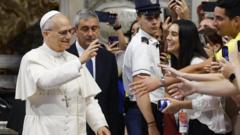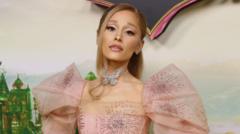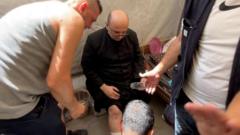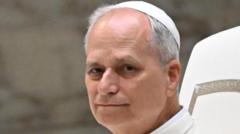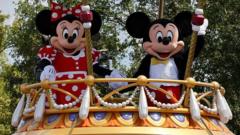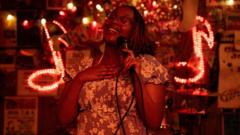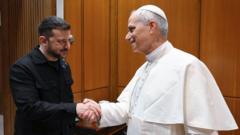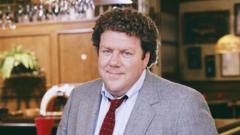As the film Conclave prepares audiences for the upcoming papal election, it sheds light on the secrecy and human elements involved in the conclave process.
Understanding the Papal Conclave: Insights from the Film Conclave
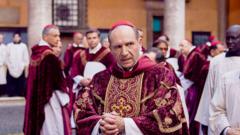
Understanding the Papal Conclave: Insights from the Film Conclave
The cinematic portrayal of the papal election process uncovers the complexities and dynamics of choosing a new pope.
In the recently released film Conclave, directed by Edward Berger and based on Robert Harris' bestselling novel, viewers gain an intriguing insight into the intricate and often secretive process of electing a pope for the Roman Catholic Church. The film features a hypothetical papal election scenario that resonates with reality as the Vatican's actual conclave is set to begin on May 7, where 134 cardinals will gather to elect a successor to Pope Francis.
The film portrays the cardinal-electors as they enter into self-imposed isolation within the Vatican, a tradition aimed at preventing outside influence. This seclusion, while designed to maintain the integrity of the election process, contrasts sharply with contemporary expectations of transparency and public scrutiny. According to Anna Rowlands, a professor of Catholic social thought, the film captures the intense atmosphere of the conclave, spotlighting the immense responsibility placed on the electors.
The narrative conveys an air of drama, showcasing the strategic maneuvers and political tactics among the cardinals. As described by Nick Emerson, the film's editor, it reveals the underlying political dynamics that could shape the outcome of the election, emphasizing the tensions that may arise between following divine inspiration and the pressures of decision-making.
Moreover, as speculation runs high regarding the next pope, the film introduces a fictional cardinal who unexpectedly rises in prominence during the election process. Historically, however, all voting cardinals must have received their appointments publicly, which raises questions about the unpredictability that could characterize the upcoming conclave. Remarkably, 80% of the eligible cardinals were appointed by Pope Francis himself, representing diverse backgrounds that may affect their voting priorities.
In a departure from the traditional perception of papal electors as untouched figures, Conclave presents the cardinals as relatable individuals with personal struggles and ambitions. This humanization of the electors allows the audience to see their vulnerabilities amid the spiritual significance of their role. Prof Rowlands succinctly encapsulates this duality, highlighting that the conclave, while sacred, is fundamentally driven by human experiences such as fear, temptation, and courage. As anticipation builds for the impending papal election, Conclave invites viewers to reflect on the profound human elements that influence such a monumental decision in the Catholic Church.
The film portrays the cardinal-electors as they enter into self-imposed isolation within the Vatican, a tradition aimed at preventing outside influence. This seclusion, while designed to maintain the integrity of the election process, contrasts sharply with contemporary expectations of transparency and public scrutiny. According to Anna Rowlands, a professor of Catholic social thought, the film captures the intense atmosphere of the conclave, spotlighting the immense responsibility placed on the electors.
The narrative conveys an air of drama, showcasing the strategic maneuvers and political tactics among the cardinals. As described by Nick Emerson, the film's editor, it reveals the underlying political dynamics that could shape the outcome of the election, emphasizing the tensions that may arise between following divine inspiration and the pressures of decision-making.
Moreover, as speculation runs high regarding the next pope, the film introduces a fictional cardinal who unexpectedly rises in prominence during the election process. Historically, however, all voting cardinals must have received their appointments publicly, which raises questions about the unpredictability that could characterize the upcoming conclave. Remarkably, 80% of the eligible cardinals were appointed by Pope Francis himself, representing diverse backgrounds that may affect their voting priorities.
In a departure from the traditional perception of papal electors as untouched figures, Conclave presents the cardinals as relatable individuals with personal struggles and ambitions. This humanization of the electors allows the audience to see their vulnerabilities amid the spiritual significance of their role. Prof Rowlands succinctly encapsulates this duality, highlighting that the conclave, while sacred, is fundamentally driven by human experiences such as fear, temptation, and courage. As anticipation builds for the impending papal election, Conclave invites viewers to reflect on the profound human elements that influence such a monumental decision in the Catholic Church.

